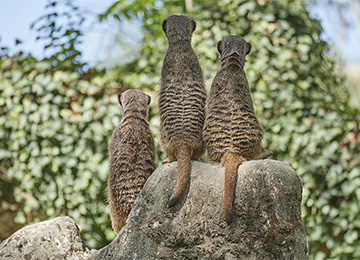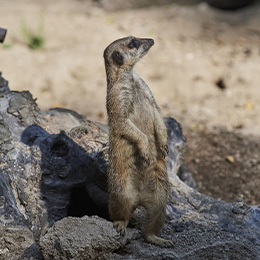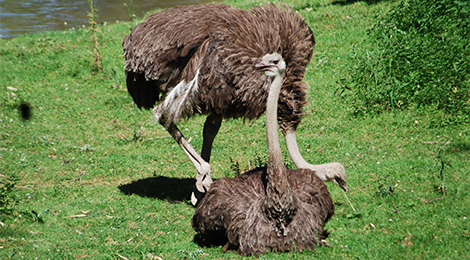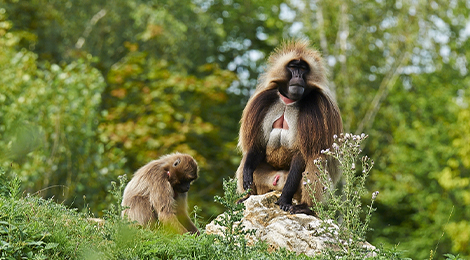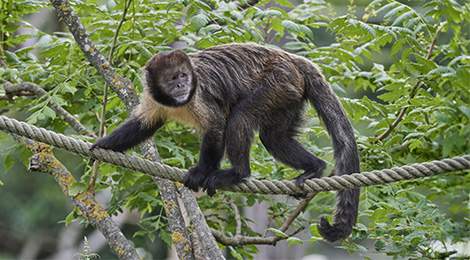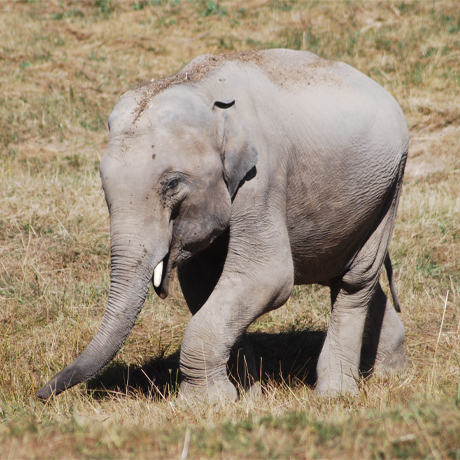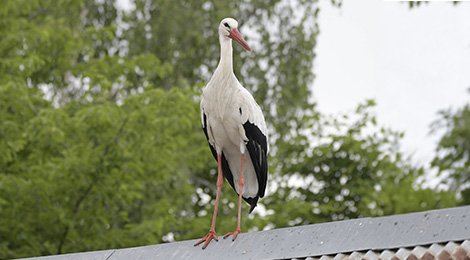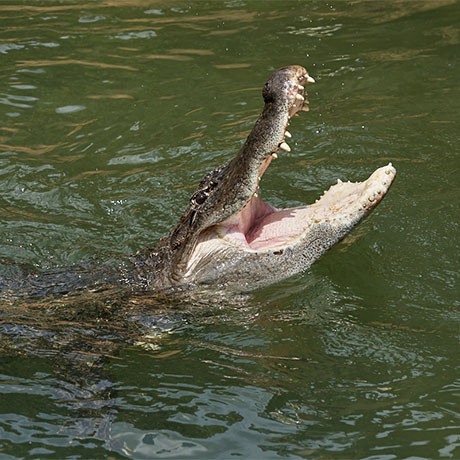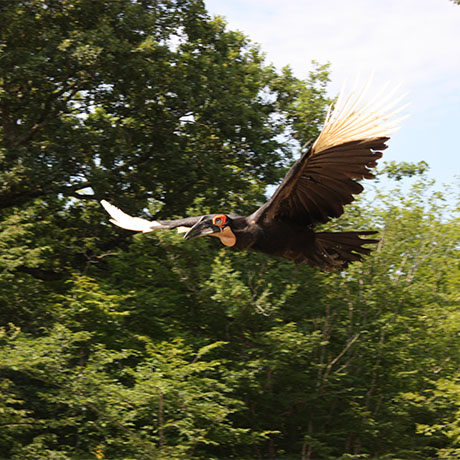The sentry of the desert
Meerkats, known as the “sentries of the desert”, live in colonies of up to 30 individuals. The group includes several males and females, as well as their offspring. Their social structure is based on affective links. All families in the group share the same den and display tremendous solidarity.
To look for food, meerkats need to dig deep holes in the ground, which is why sentries take turns keeping a lookout throughout the day. A sharp growl indicates an as yet unspecified danger, a barking noise warns of a land predator, and a specific sharp cry announces the presence of raptors. Meerkats have excellent eyesight and can distinguish between a raptor and a vulture from a great distance.
The meerkat occurs in South Africa, Botswana, Zimbabwe and Mozambique.
Births take place all year round, the female gives birth in a private room in the burrow, born blind and deaf, the young will be raised there by the mother.
Today, the conservation situation of the meerkat is considered of little concern by the International Union for the Conservation of Nature, however, its population is relatively stable. Indeed, as meerkats live in areas with very little, if any, human activity, they are little affected.
-
HabitatSavannah, arid areas and grassland
-
Food
Insects, small vertebrates, eggs.

Meerkats are immune to a large variety of poisons. They cut off the poisonous tail of scorpions before eating them.
A zoological reserve populated by Asian elephants, giraffes, lions, tigers, hippos, chimpanzees, gibbons, wolves, ostriches ... Animals evolving in their reconstituted natural environment, to discover as a family.
All animals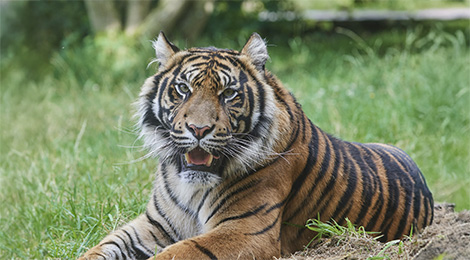
-
![]() Sumatran tiger Discover animal
Sumatran tiger Discover animal -
![]() Ostrich Discover animal
Ostrich Discover animal -
![]() Gelada Discover animal
Gelada Discover animal -
![]() Golden-bellied capuchin Discover animal
Golden-bellied capuchin Discover animal -
![Un éléphant se baladant au parc animalier Le PAL]() Asian elephant Discover animal
Asian elephant Discover animal -
![]() White stork Discover animal
White stork Discover animal -
![les dents et la gueule d'un alligator du Mississipi au parc animalier Le PAL]() Alligators Park Discover animal
Alligators Park Discover animal -
![Calao terrestre de Leadbeater en plein vol au zoo Le PAL]() Southern ground hornbill Discover animal
Southern ground hornbill Discover animal



